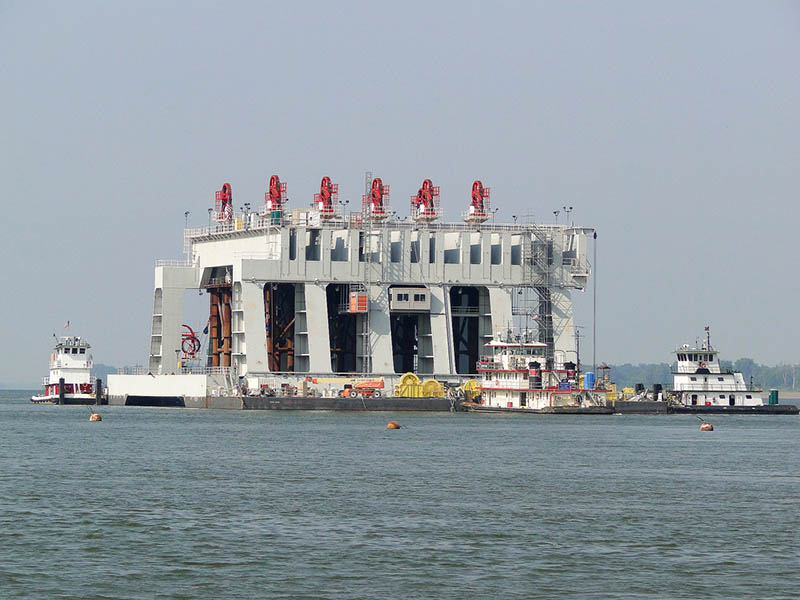Barge operators and users of the inland waterways are urging Congress to adopt a new cost-sharing formula that would make more money available for lock and dam construction.
The Inland Waterways Trust Fund, which pays for new lock and dam construction, is currently financed through a 50-50 match between diesel tax revenues paid by the inland barge industry, and funds from the U.S. Treasury. Money is then dispersed to priority construction projects along the inland river system which are managed by the Corps of Engineers.
In 2014, through the Water Resources Reform and Development Act, that formula was revised to a temporary 15% contribution from the industry tax and 85% from federal funds. The goal was to speed completion of the Olmsted Locks and Dam on the Ohio River in Illinois, which was greatly over budget and behind schedule largely due to funding lapses from Congress. At the same time, the barge industry agreed to a 45% increase in the diesel fuel tax to further boost the IWTF.
“This policy change led to significant progress,” said Peter Stephaich, chairman and CEO, Campbell Transportation, Houston, Pa., and chair of the board of directors of the Waterways Council Inc., a Washington-based waterways advocacy group funded by the barge industry.
Olmsted opened last August, he said, and construction has resumed on three other priority navigation projects along the Lower Monongahela River in Pennsylvania, the Kentucky Lock and the Chicamauga Lock in Tennessee. In addition, a major rehabilitation of LaGrange Lock on the Illinois Waterways was started.
But now that Olmsted is finished, the funding formula will return to its original 50-50 split, and this has barge operators and their customers worried that progress toward modernization of the aging inland waterways system will again slow down.
Speaking Wednesday before the House Transportation and Infrastructure Committee hearing, Stephaich urged Congress to adopt the same 25%-75% cost-share model that is now used for construction funding for deep-draft ports.
“With Olmsted soon to be in the rearview mirror, and the Lower Monongahela project expected to be funded to completion this fiscal year in the FY2020 appropriations bill, it is time to start looking toward the next round of inland waterways modernization investments,” said Stephaich, whose company operates 50 towboats and over 1,100 barges along the Ohio River.
He said there are currently 15 other high priority projects awaiting construction. Without a policy change, only about $230 million a year would be available for inland modernization, and at this level many of the priority projects would not begin construction in the next 20 years. He called this “an unacceptable situation.”
With a formula change, Stephaich said the inland navigation program would be able to operate at or above $400 million a year, similar to the level under Olmsted. “This would accelerate project delivery on the portfolio of critical inland waterways projects,” he said.
Phyllis Harden of Pine Bluff Sand and Gravel Co. in Arkansas, which uses barges to move its products, also urged the policy change. She said that without the modification, it could take another 40 years to complete the Three Rivers project along the McClellan-Kerr Arkansas River Navigation System. The McClellan-Kerr is made up of 18 locks and dams beginning at the confluence of the White and Mississippi rivers and ending near Tulsa, Okla.
“This system is a rapidly aging system exacerbated by long-deferred maintenance,” she told the subcommittee, and is believed to have a 50% probability of failure within the next five years.





